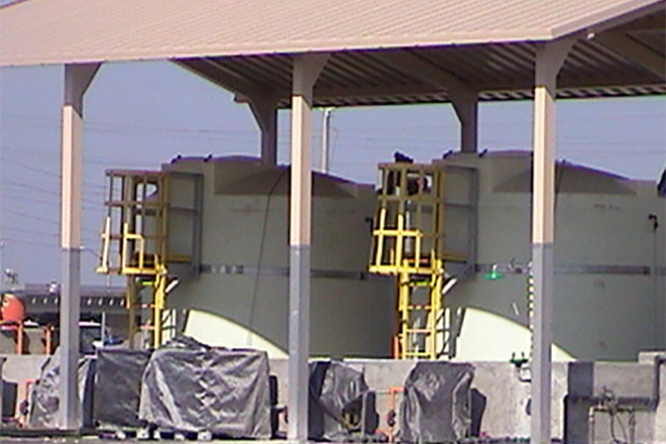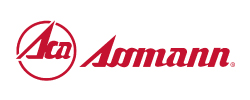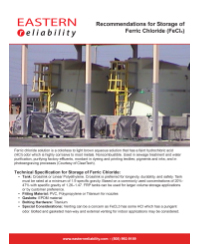Recommendations for Storage of Ferric Chloride (FeCl3)
Ferric chloride solution is a colorless to light brown aqueous solution that has a faint hydrochloric acid (HCl) odor which is highly corrosive to most metals. Noncombustible. Used in sewage treatment and water purification, purifying factory effluents, mordant in dyeing and printing textiles; pigments and inks; and in photoengraving processes (Courtesy of ClearTech).

Technical Specification for Storage of Ferric Chloride:
- Tank:
Cross-link or Linear Polyethylene. Cross-link is preferred for longevity, durability, and safety. Tank must be rated at a minimum of 1.9 specific gravity. Based on a commonly used concentrations of 20%-47% with specific gravity of 1.26-1.47. FRP tanks can be used for larger volume storage applications or by customer preference. - Fitting Material:
PVC, Polypropylene or Titanium for nozzles - Gaskets:
EPDM material - Bolting Hardware:
Titanium - Special Considerations:
Venting can be a concern as FeCl3 has some HCl which has a pungent odor. Bolted and gasketed man-way and external venting for indoor applications may be considered.
Secondary Containment
End user should check local regulations to meet secondary containment requirements. Containment must be adequate in capacity and suitable for DEF. Double wall type tanks or secondary containment basins should be sized typically to 110% of the primary tanks capacity. By accepting the delivery of the tank the customer accepts full responsibility for providing appropriate and adequate containment for the stored material Eastern Reliability offers a variety of secondary containment option.
Connections
Bulkhead style connections can be used on tanks 1000 gallons and below. Tanks above 1000 gallons sidewall connections should be Flange type construction. Sidewall connections should be installed a minimum of 7" above the tank floor. Internal siphon drains can be used if required. There are no restrictions on dome fittings. On double wall type tanks Titanium outlet connections, with EPDM gaskets, are required.
Flexible Hoses or Expansion Joints (not required for FRP tanks)
Flexible hoses or Expansion Joints must be used on all lower 1/2 sidewall connections. A light weight isolation valve is permitted prior to the flexible joint. Nipple and valve weight must not exceed (8-Lbs.) All piping must be supported independent of tank. Pipe supports must be installed after the flexible joint, to allow the tank to expand and contract under normal service conditions. Polyethylene tanks expand and contract both laterally and vertically; expansion hose or joint must accommodate for this expansion. These are not required for FRP tanks.
Ferric Chloride
Tank must maintain atmospheric pressure. Vents must be sized for a minimum of two times the largest inlet or outlet port for pneumatically or pump filled tanks. Adequate venting must be maintained at all times. Under no circumstances should tank be placed under pressure or vacuum conditions. Special considerations should be taken during venting and air intake into the tank to prevent dust or debris from entering the tank. A vent breather system similar to an automotive air filter should be considered.


